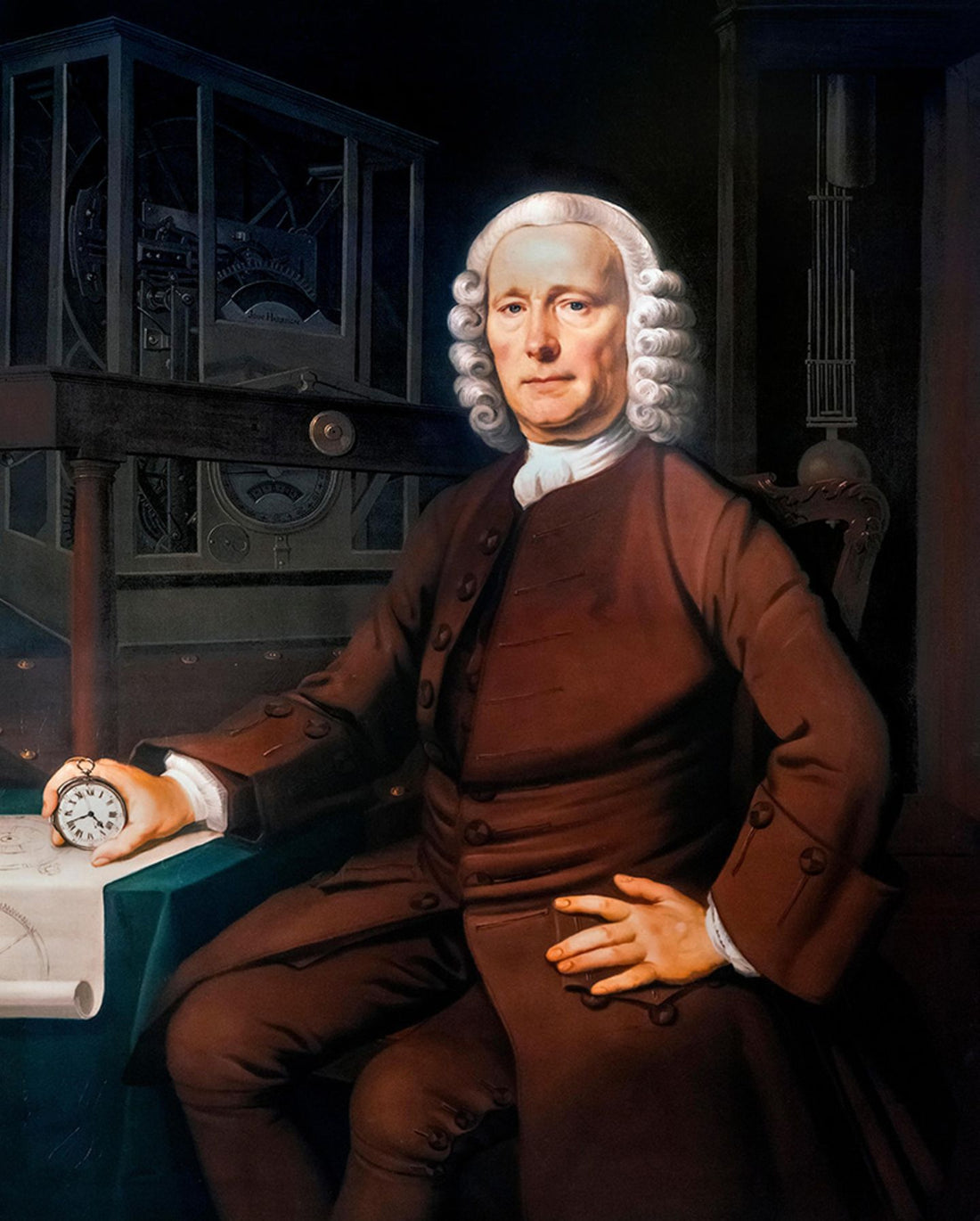
John Harrison makes longitude measurable and saves countless ships and sailors
Share
The length problem
While geographical latitude can be determined relatively easily with sufficient accuracy for maritime navigation, determining longitude with similar accuracy is much more difficult.
In 1714, the English Parliament offered a prize of up to 20,000 pounds for a practical solution to the longitude problem through the Longitude Act . [ 4 ] The prize money was based on the accuracy of the submitted method. It was not until a decade after the announcement of the prize money that John Harrison began to address this topic, which would accompany him until the end of his life. Up to that point, no practical solutions had been found using astronomical navigation . The Board of Longitude was established to evaluate submitted proposals and to administer the prize money.
Harrison's vision
Renowned astronomers throughout Europe strived for astronomical solutions, particularly the lunar distance method, which determines the angular distance of the Moon from bright fixed stars near its orbit. This astronomical approach was based on tables of stellar occultations , which, while sufficiently accurate at the time, required the Moon to be visible and were complicated to apply.
John Harrison, on the other hand, relied on sufficiently accurate clocks.
Harrison had built his first pendulum clock with a wooden gear train in 1713 and later, as the first important invention, compensated for the temperature dependence of the pendulum: A grid of two types of metal rods with different thermal expansion ( steel and brass ) prevented the change in the total length of the pendulum when the temperature fluctuates.
He achieved low-friction running of his grandfather clocks with his Grasshopper escapement ; lubrication-free wooden gears prevented deviations caused by resinifying oil. Verifications by measuring star passages demonstrated a reduction of previous inaccuracies to less than a tenth.
He then wanted to construct similarly accurate clocks for ships : he presented his concept in 1728, and his first model in 1735. He compensated for temperature fluctuations using bimetal , and for ship movements by connecting two identical pendulums with a spring (in the first design).
At the beginning of the journey, the chronometer was set to solar time at the known longitude, namely the Greenwich Meridian . From the time difference between the displayed time and the local time (determined by bearings from the sun or stars), the geographical longitude could be calculated with sufficient accuracy—assuming the time was approximately accurate to the second.
Successful tests

A test drive with the first model developed by Harrison, now called H1, to Lisbon and back showed far greater accuracy than required to win the prize, but the journey time did not meet the conditions of the tender.
Above all, Harrison, as a scientific layman , faced a learned panel. This delayed the acceptance of his idea by decades. In particular, Sir Nevil Maskelyne (1732–1811), Court Astronomer to the English Royal Family from 1765, relied until the very end on determining longitude using the lunar distance method (which was significantly more cost-effective and easier to implement in terms of equipment), and changed the interpretation of the tender to Harrison's disadvantage.

Harrison received just enough money from the Longitude Commission's funds for an improved model H2 (1737), and later for the ball-bearing H3. Neither of these two clocks was tested, as England was at war with Spain and no one wanted such a device to fall into enemy hands.
Source: Wikipedia

